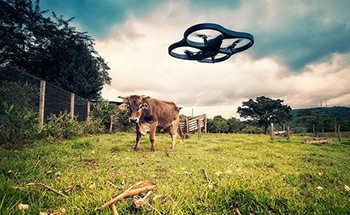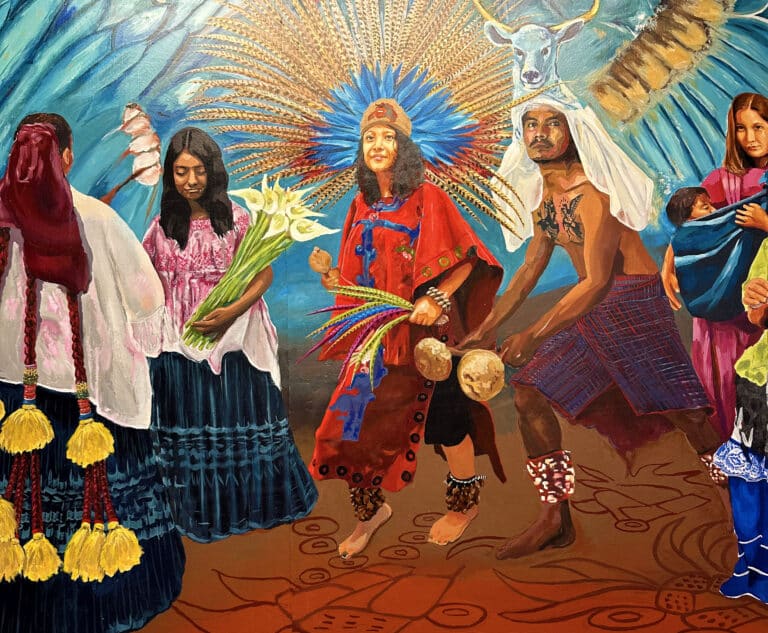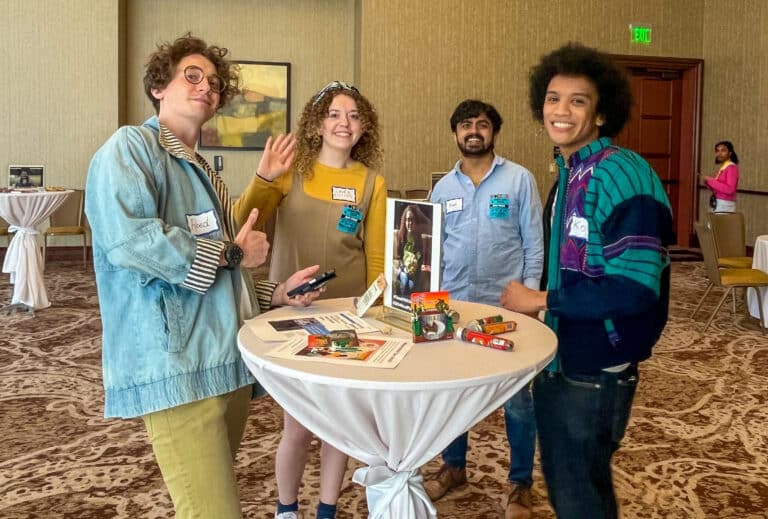Advances in technology continue to be a topic for everyone invested in education. How do we best use technology to support teaching and learning? How we teach learners of all ages to be strong uses of technology? It can feel overwhelming to keep up with the changes, but that struggle to keep up is not at all new.
Sometimes, looking at similar challenges in a new context can help make things easier to grasp. Another field that has always been moving forward at the speed of technology? Farming. It might not align with your preconceived notions of how food gets to your table, but technology is an integral piece to how many farms are able to stay viable.
Farming is, and always has been, among those leading the way in technology through each of the industrial revolutions.
Agriculture during the first industrial revolution
 The first industrial revolution helped us move from an agrarian society to one where more tasks were mechanized.
The first industrial revolution helped us move from an agrarian society to one where more tasks were mechanized.
In the 18th and 19th centuries, people started to move away from farms and into cities, where new types of employment were becoming available. Among the notable inventions during this period were a reliable form of steam engines, transatlantic cable and mechanical sewing machines.
Farmers were not left out of this period of innovation. Eli Whitney invented the cotton gin, helping to automate the separating of cottonseed from the cotton fiber. This, combined with the inventions of the spinning jenny, which made finishing cotton easier, and the flying shuttle, an advanced kind of loom, revolutionized cotton growing and how it worked with the increasingly factory-based textile industry.
Agriculture during the second industrial revolution
 The second industrial revolution is tied to such advances as telephones, light bulbs, diesel engines, airplanes, the Model T and the introduction of assembly lines. Advances in transportation did more than help move people. They also helped move crops, livestock and farming machinery, expanding markets and making farms more efficient. The expansion of the railroad during the second industrial revolution meant that, for the first time, Midwestern farms could transport goods to the Pacific and Atlantic coasts.
The second industrial revolution is tied to such advances as telephones, light bulbs, diesel engines, airplanes, the Model T and the introduction of assembly lines. Advances in transportation did more than help move people. They also helped move crops, livestock and farming machinery, expanding markets and making farms more efficient. The expansion of the railroad during the second industrial revolution meant that, for the first time, Midwestern farms could transport goods to the Pacific and Atlantic coasts.
Agriculture during the third industrial revolution
 The third industrial revolution, which is sometimes called the digital revolution, saw technology advancing from mechanical and analog to digital. This technological revolution was one piece of how the agriculture industry could keep up with population growth, which more than doubled between 1960 and 2008, despite decreasing land availability.
The third industrial revolution, which is sometimes called the digital revolution, saw technology advancing from mechanical and analog to digital. This technological revolution was one piece of how the agriculture industry could keep up with population growth, which more than doubled between 1960 and 2008, despite decreasing land availability.
Digital tools gave farmers the ability to record and analyze more data, in order to engage in precision farming. In 1994, farmers started using satellite technology to innovate farming practices, and the FDA granted the first approvals of foods produced through biotechnology. Agricultural technology experienced many advances during the third industrial revolution, allowing farmers to start using weed-and insect-resistant crops, genetically engineered crops and more advanced insecticides.
Agriculture during the fourth industrial revolution
 |
| Attribution some rights reserved by Mauricio Lima |
As discussed in KnowledgeWorks’ latest forecast, “The Future of Learning: Redefining Readiness from the Inside Out,” we are now at the start of the fourth industrial revolution, during which we are seeing advances in digital technology become embedded into day-to-day activities and business. For agriculture, this means big advances in precision farming, as indicated by John Deere’s recent acquisition of the agri-tech start-up Blue River Technology. Farmers can keep track of their crops’ progress via drones and care for plants with robotic sprayers.
“People assume that farmers don’t use technology,” said Saskatchewan-based farmer Kim Keller in an article for CBCNews. “In fact, farmers are often on the forefront of using technology, and we use a lot of technology in our day-to-day operations.”
Advances in technology mean changing how we approach readiness. In The Future of Learning: Redefining Readiness from the Inside Out, we explore an evolving definition of both college- and career-readiness.
The future and technology
Around the world, farmers and technologists – not mutually exclusive categories – will be looking for ways to be more efficient, increase output and keep people fed. The technology is a piece of the puzzle to do that. When we look at teaching and learning, what role can and should technology play? The answer to that does not and cannot be a static one. It needs to evolve alongside the technology and with our understanding of what knowledge, skills and attributes we want our learner to have.







